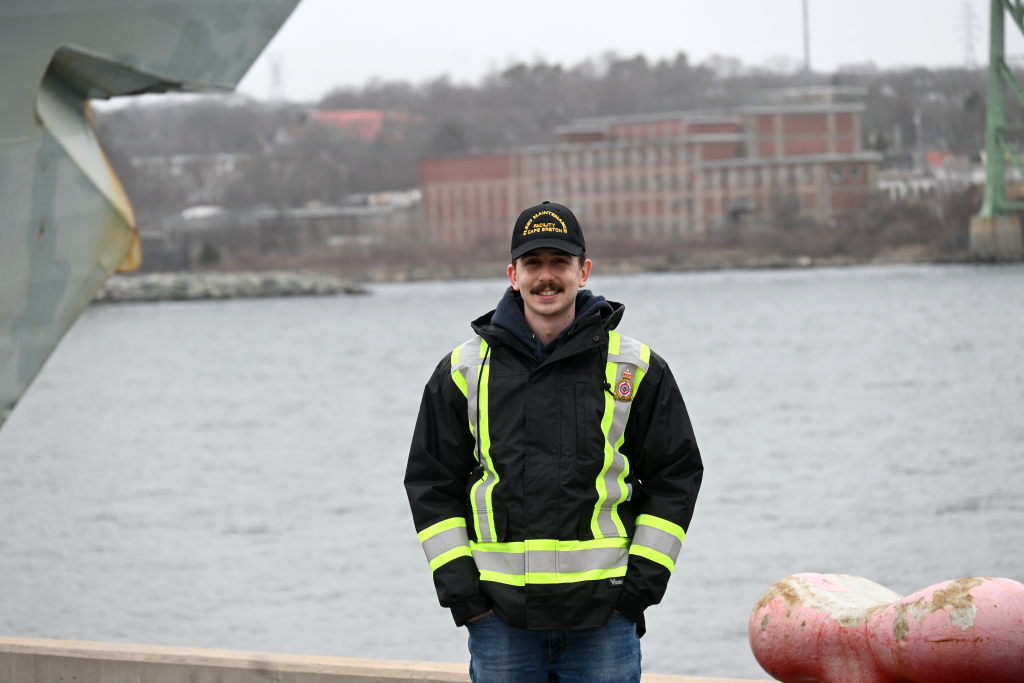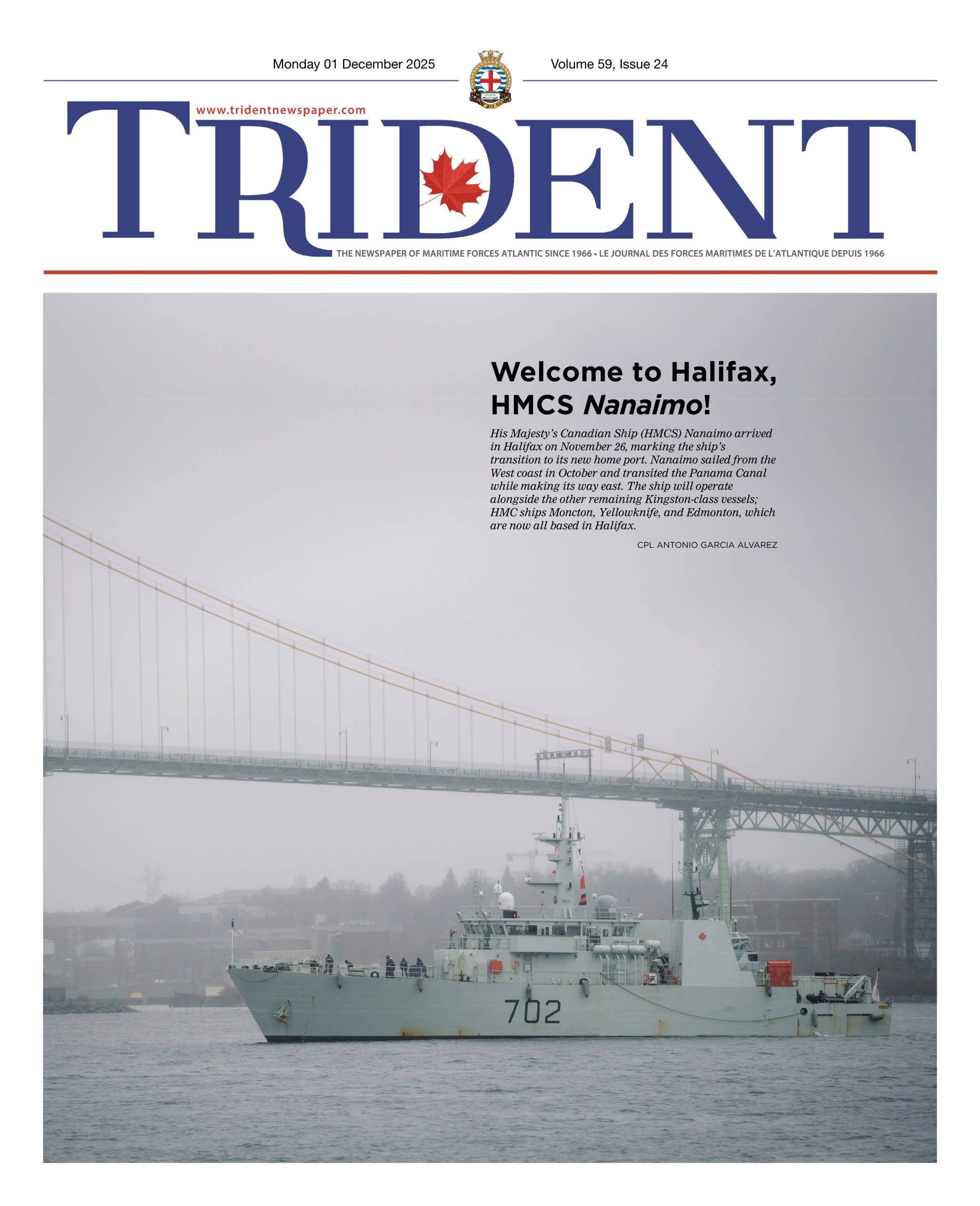
SUBMITTED
Coast collaboration enhancing submarine and ship readiness
By Gabrielle Brunette,
FMF Cape Scott
One Navy Team – it’s the concept that the Royal Canadian Navy (RCN) functions as a unified entity, whether you’re in uniform defending our country or a civilian supporting the Navy’s mission. We have one goal, one purpose, and one team.
For Canada’s naval operations, the ability to seamlessly collaborate across vast distances is a key factor in maintaining operational readiness. The distance between Canada’s East and West Coasts is roughly 6,000 kilometers, and yet, the Fleet Maintenance Facilities (FMFs) at either end of the country are required to work together to keep the RCN’s vessels and submarines in a state of operational readiness.
Philippe Larrivee, Work Center Supervisor of Underwater Weapons Engineering at FMF Cape Scott, describes Canada’s naval situation as unusual.
“People always say it’s like two navies because things are so different on each coast, but the two FMFs are aligned as much as they can be, and we share information as frequently as we can,” Larrivee said.
Having a continuous knowledge-sharing network in place is crucial. With fewer personnel and an ever-growing need for expertise in naval systems, the successful collaboration between the facilities has become indispensable.
Just last month, FMF Cape Scott was faced with a reduced number of Subject Matter Experts (SMEs) to conduct a Sonar Performance Figure (SPF) trial on His Majesty’s Canadian Ship (HMCS) St. John’s. The remaining team members, although skilled, lacked the full breadth of experience necessary for the task.
In response, the team reached out to FMF Cape Breton’s engineering team for assistance.
“It was very last minute, short timeline,” Larrivee explained. “They immediately accepted.”
Craig McKay, one of the two West Coast SMEs sent to assist with the trials, said the team at FMF Cape Scott welcomed them with open arms. While there were some differences in processes between the two coasts, most of the work remained the same.
“It was like doing a trial on the West Coast, only colder,” McKay joked.
During an SPF trial, engineers assess the sonar system’s noise levels, range prediction, and other performance metrics to ensure the system can perform optimally in varied underwater environments. This is particularly important prior to a deployment in areas where underwater threats, such as enemy submarines, are a concern.
While the team experienced technical issues that prevented the trial from being completed, the support provided by the West Coast ensured that HMCS St. John’s was able to proceed with the trial as much as possible, minimizing delays and maximizing learning opportunities for the East Coast SMEs.
This knowledge-sharing practice is essential in addressing unforeseen challenges. When an issue arises with a particular system, it’s common for engineers from one FMF to reach out to their counterparts on the other coast to share insights, lessons learned, or even troubleshooting techniques.
Back in Esquimalt, McKay explained that the collaboration between the two coasts is mutual and on-going – with FMF Cape Scott expected to help Cape Breton when it comes to navigating the underwater warfare system upgrade on two ships of the West Coast fleet.
“The East Coast has already been able to go through all the trials and tribulations of operating with a brand-new system, and they’re going to come out of this with all the things that they’ve learned,” McKay explained.
FMF Cape Scott SMEs will also be flying out to the West Coast at the end of May to assist with HMCS Corner Brook’s Weapons Discharge System Harbour Acceptance trial. Having recently completed a similar scope of work on HMCS Windsor, FMF Cape Scott SMEs will be well equipped to assist FMF Cape Breton conduct the trials efficiently.
“The collaboration definitely helps ships get out of the door and on with their missions,” McKay said.
For McKay, travelling to Cape Scott has also been valuable in developing more meaningful personal and professional connections with his East Coast counterparts, further strengthening the relationship and collaboration between the two FMFs.
Amit Bagga, Combat Systems Engineering Officer at FMF Cape Breton, also emphasizes the importance of a strong working relationship between the two coasts to build a robust, flexible, and self-reliant naval force. He believes collaboration between engineering, and other departments like production, is something we can continue to improve on by asking ourselves: How do we do better at leveraging each other’s knowledge across both coasts?
By working together, FMF can overcome the challenges posed by technical trials, personnel shortages, and the ever-present need for expert knowledge. The joint efforts in conducting trials, as well as the ongoing exchange of information and expertise, are vital to ensuring that Canada’s naval forces are ready to meet any challenge.
Continuing to strengthen coast-to-coast collaboration will remain an integral part of maintaining naval readiness and ensuring the successful deployment of Canada’s vessels and submarines.






